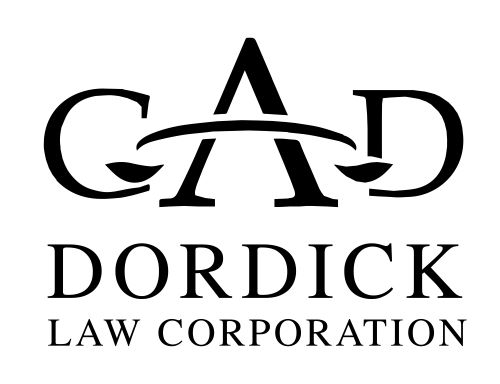Konrad's Top 10 Cheap or Free Ways to Get Faster

I am afforded a pretty unique perspective at many races. I'm at the finish or transition, watching the whole race unfold as the announcer. I get to see stuff. Some of it is inspiring. Some of it is funny. Some of it causes me to squirm in discomfort.
But one thing strikes me again and again:
* Triathletes will spend limitless money on this sport to get faster and will undo all of their efforts with simple mistakes and technical errors that waste tons of time.
With that in mind, here is my Top 10 list of ways you can get faster without working any harder and with minimal additional cost (no, you do not need to go buy a carbon Kuotoa, Zipp 404's or a new wetsuit. Keep reading.) This list is in roughly chronological order of how you might approach the race.
10. Warm-up: I notice that some folks either don't warm up at all or their warm up is minimal. In a race as short as a sprint or Oly, you need to hit the race warm. I used to think that using a bike trainer for warm up was a wanker move but a few years of bike racing has taught me the value of getting your legs warm. Even 15 mins. on your trainer before getting to transition will make a difference
Cost: $0
9. Swim prep: Get in the water BEFORE your race. You need to know the temperature, the bottom conditions, the current direction and the power of the current and swell. Do not start your race dry.
Cost: $0
8. Swim technique: Take a lesson. I'm not kidding. Spend the money and take a lesson. 90% of the swim issues out there are technical. Not the kind of goggles, not the brand of your wetsuit, not even (generally) your fitness. 1 hour in a pool with a coach will save big time in the race.
Cost: $60-$80/hour
7. Ocean swims: Do them. Regularly. That's where we race. You gotta practice like you play.
Cost: $2 for parking
6. T1/T2: Do you know how hard you would have to work to go 2 minutes faster in your run? Your bike? Your swim? The amount of training needed to go that much faster in a 5K or 10K run is stunning. Do you know how much harder you have to work to shave minutes off your transitions? ZERO. Nada. Zilch. You just need to prepare and execute.
It doesn't take more muscle, more fitness, or an increased VO2 max. It just takes a plan and execution. One LATC'er who shall remain nameless (ok, it was Ian Murray) had the fastest T1 *and* the fastest T2 at Strawberry
Fields. His T1 was 1:56 inclusive of the beach run. The average was around 3:45. T2 was a mind boggling :38 seconds. The average for all participants was about 1:20.
His total advantage over the average racer was about 2:20. In a race that lasted just over an hour. He was 3.5% "faster" without spending one additional calorie or heart beat. Now THAT is how you win your age group. Right Ian?
Cost: $0 for LATC sponsored transition clinic
5. Bike gearing: Mashing is for potatoes. Not for pedal cadence. Gear down to an easier gear and spin at 90 RPM. I passed a lot of racers from earlier waves and couldn't believe how many people were below 70 RPM cadence in their big ring/small cog combo. Ease off, let your legs spin, go faster and be ready for the run.
Cost: $0 ($30 for cheap bike computer than reads cadence)
4. Bike equipment: You don't need to spend big bucks to have an impact on your bike speed. The biggest culprit is aerodynamics. Not frictional resistance from your bearings (though ceramic bearings are helpful) nor the weight of your bike (unless there are big hills). For most flat triathlons like SFT, Breath of Life, and Los Angeles, the struggle is aerodynamics.
Here are three cheap things you can do to save time:
* Get aero bars! Why are we even having this discussion? If you don't have them, get them. Now.
Cost: Less than $100 for clip-on aerobars
* Aero wheels. You do NOT need to buy deep dish carbon rims or a disc unless you are swimming in money and have nothing better to spend it on. Try this: Go to www.wheelbuilder.com. Buy the disc cover. For less than $100, turn your normal spoked wheel into a low profile disc. $100 vs. over $1500 for a lower end carbon disc. Unreal value!
Cost: ~$100
* Aero helmet. OK, I'll admit, they look ridiculous and I haven't been able to bring myself to getting one. But they work and aren't too horribly expensive. If you skip this reco, I'm cool with it.
Cost: ~$150 (look for great deals from LATC on Rudy Project aero helmets)
3. Run intervals: Most people tend to go out and run. No objective, no differentiation in pace or terrain. They run. Try running timed variable paced intervals. Take your HR up above your threshold, come back down, recover and do it again. See what happens.
Cost: $0
2. Get a coach: Even a little guidance goes a long way in the sport. Don't want to shell out for monthly coaching. How about a one-time consult? A written, templated program? OK, I'm obviously biased but I've gotten a ton of value from written programs and the guidance of my many friends who are coaches. Think you don't need one? Funny, the pros at Kona do. So do our Olympians. If the best of the best can benefit, maybe you can, too.
Cost: Variable from cheap to pricey
1. Get a bike fit: This is, in my mind, the #1 place that you can save time and enjoy this sport more. Have your body fit to your bike by a certified, experienced, professional bike fitter. Not simply a seat height adjustment, I'm talking 1 hours with a pro who will, at the very least:
* Determine your ideal hip angle and knee angle which will allow him/her to
* Ensure your seat height is proper
* Ensure your seat's fore/aft position is proper
* Ensure your seat's tilt is proper
* Determine your ideal "reach" and adjust stem length accordingly
* Determine your ideal "drop" and adjust stack height accordingly
* Ensure that you are minimizing the risk of repetitive use injury by creating a natural, ergonomic pedaling motion
* And ultimately this will all result in a fit that is comfortable, aerodynamic and efficient.
If you don't know what a goniometer is and how to use one, or if you are still trying to figure out what I meant by "stack height", or if you are just uncomfortable on your bike and getting rubbed in the wrong places you
may be a great candidate for a bike fit.
Judging by the craziness I see at EVERY race I go to (Examples: Superman position, reach and RISE, hips rocking like Elvis, sore necks, sore bootys, injured knees), nearly everyone needs a fit.
Cost: ~$100-$150
So there you have it. 10 low cost, low effort ways to get faster without working harder.
Or keep doing the things you are doing and get the same results.
Best,
Konrad Ribeiro



